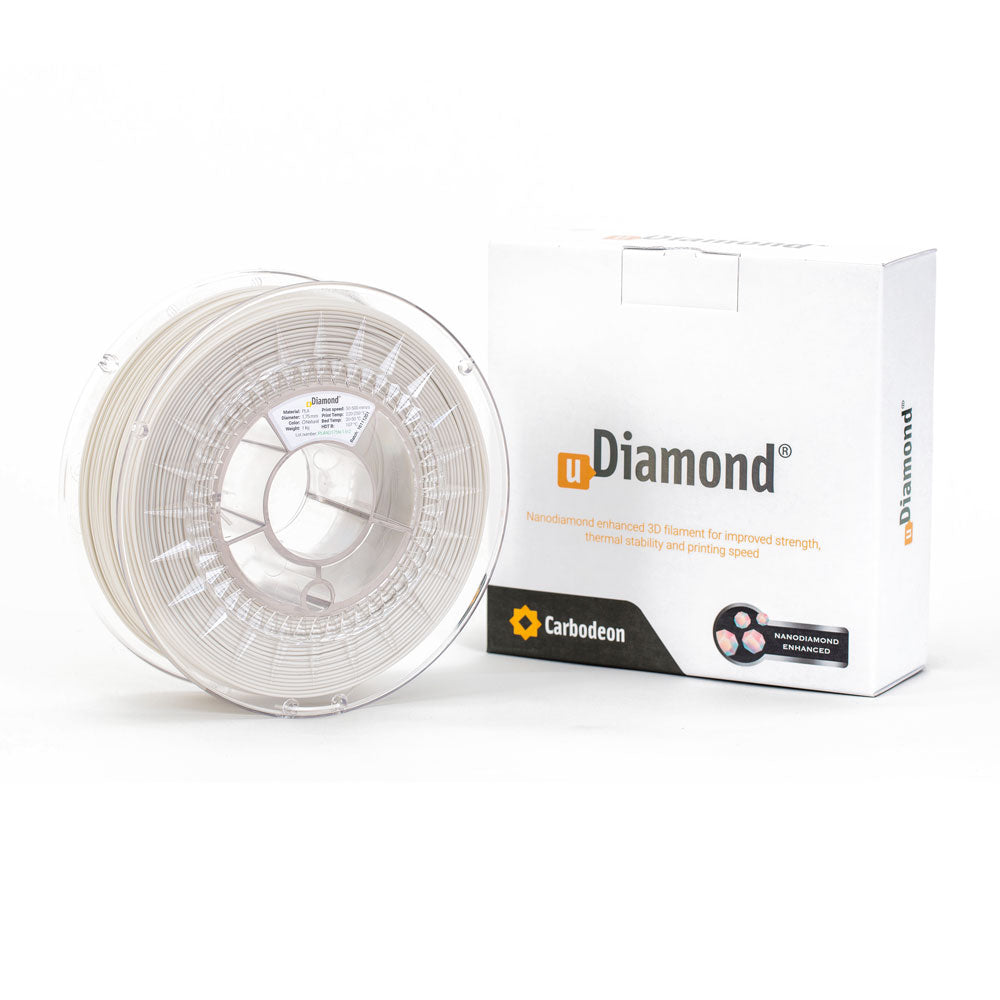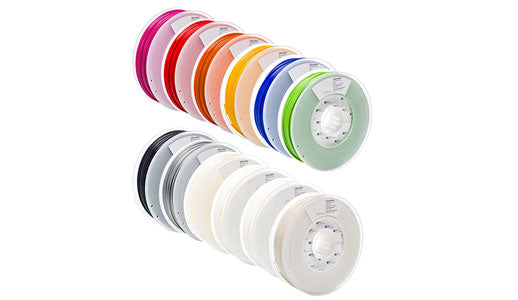Overview
Carbodeon PLA + uDiamond Filament
Carbodeon PLA + uDiamond Filament is a high-performance diamond enhanced 3D printing filament. It contains functionalized nanodiamond particles. Nanodiamonds are spherical and act as lubricant in the filament extrusion, causing no increase in nozzle wear. This means you can print this material with standard brass nozzles, unlike other carbon-reinforced materials. The enhanced thermal conductivity of the material enables significantly faster printing speeds (up to 500mm/s, depending on your 3D printer's capabilities).
The diamond particles also reinforce the polymer structure, improving the stiffness, strength and adhesion between printed layers. The material also has a significantly higher temperature resistance than standard PLA, with a heat deflection temperature of 107C (125C for annealed components). The filament is suitable for consumer-grade and professional FDM/FFF 3D printers. The unique combination of stiffness, strength, wear resistance and unique thermal features makes it an excellent choice for functional mechanical prints.
Product Details
- 1kg or 2.3kg spools
- Biodegradable
- Low toxicity
- Nozzle friendly
- Withstands heat
- High strength
- High stiffness
- Printing speed: Up to 500mm/s
- Stiffness (Young's modulus): 6500MPa
- Strength (Tensile Strength): 45MPa
- Heat Deflection Temperature: 107C (as printed) and 125C (annealed components)
Recommended Print Settings
- Nozzle temperature 220°C - 250°C (depending on speed)
- Printing speed 50-500 mm/sec (depending on your printer's capabilities)
- Bed temperature 0°C - 50°C
Compare Materials
| Material Type | Properties | Common Uses | Extruder Temp | Bed Temp | Bed Adhesion | Shop for Material |
PLA(Polylactic Acid) |
|
| 190-220C | 40-60C (optional) | Blue painter's tape, glass with coating of hairspray, or glass with a thin coating of PVA glue | |
ABS(Acrylonitrile Butadiene Styrene) |
|
| 225-260C | 80-110C | Kapton tape, glass with a coating of ABS juice (ABS / acetone slurry), or hairspray | |
PETG(Polyethylene terephthalate glycol-modified) |
|
| 230-250C | 80-100C | Glass with hairspray or painter's tape | |
Nylon(Polyamide) |
|
| 240-260C | 60-80C | Glass with a thin coating of PVA glue | |
Polycarbonate |
|
| 260-280C | 107-115C | Ultimaker adhesion sheets or glass with thin coating of glue stick / PVA glue | |
TPU(Thermoplastic Polyurethane) |
|
| 220-240C | No heat | Glass (no adhesives required) | |
Polypropylene |
|
| 205-240C | 85-100C | Ultimaker adhesion sheets or clear packaging tape | |
PVA(Polyvinyl alcohol) |
|
| 215-225C | 60-70C | Glass |
Refer to our complete Filament Guide for details about additional materials










